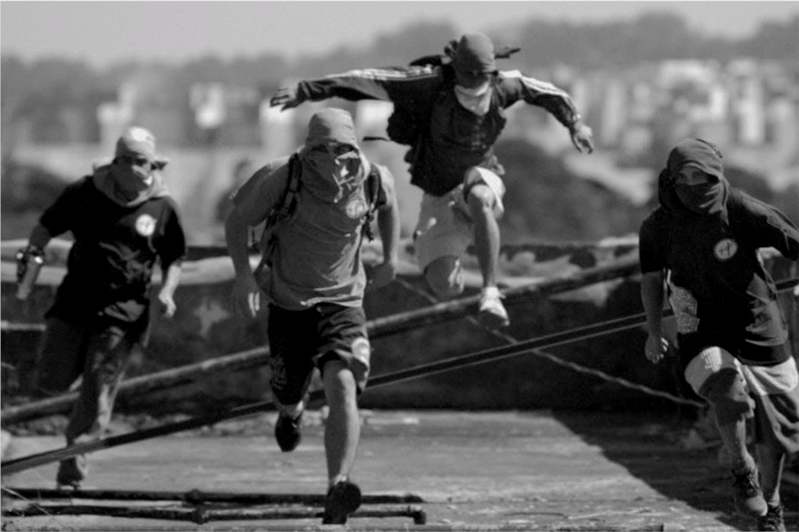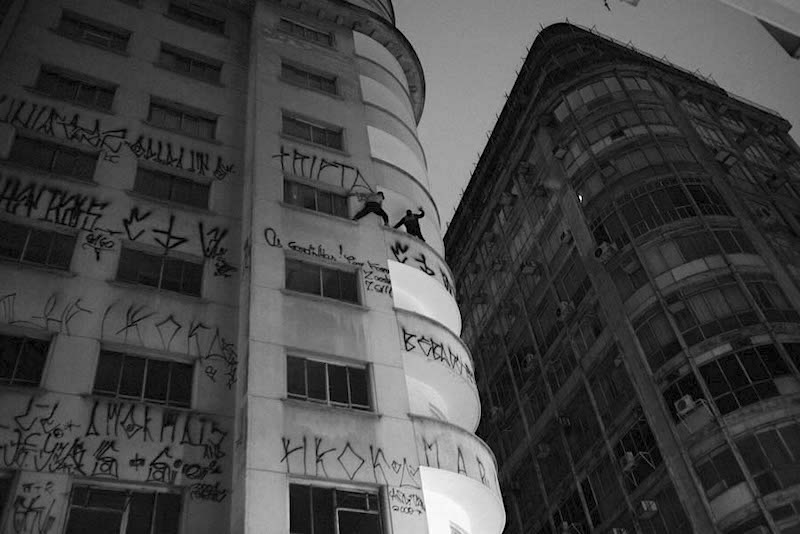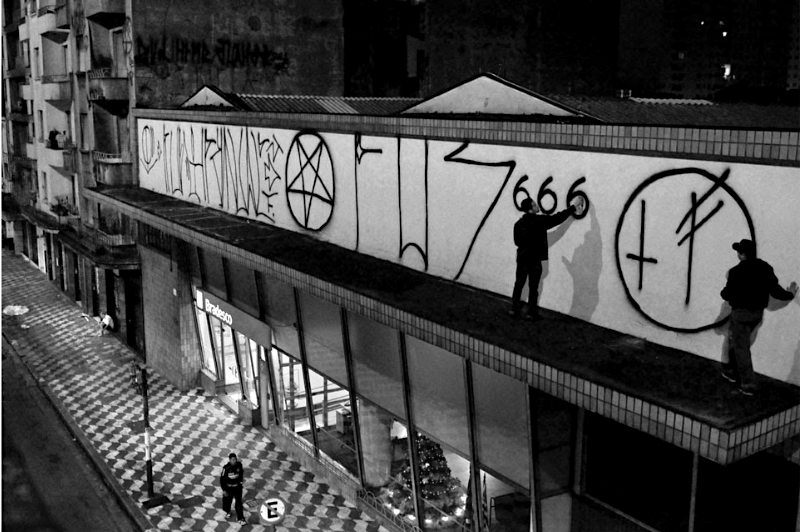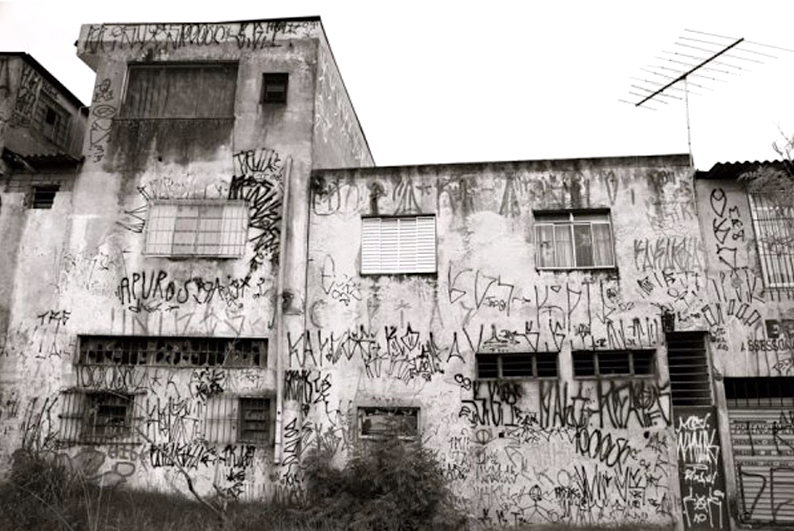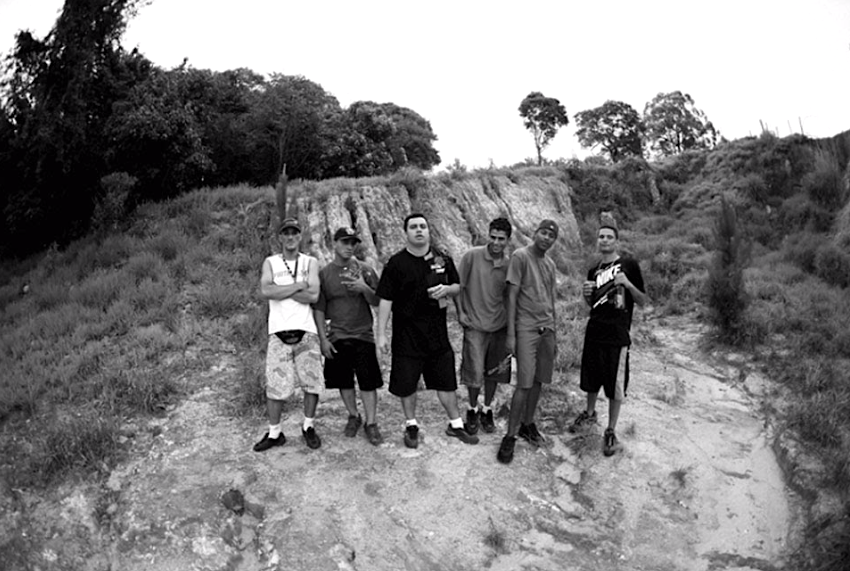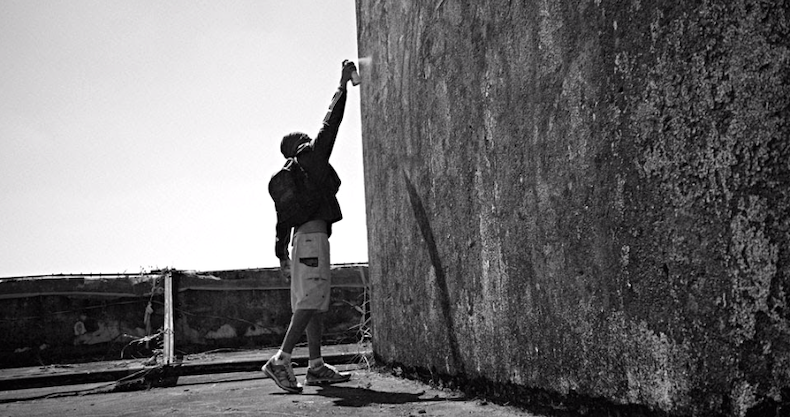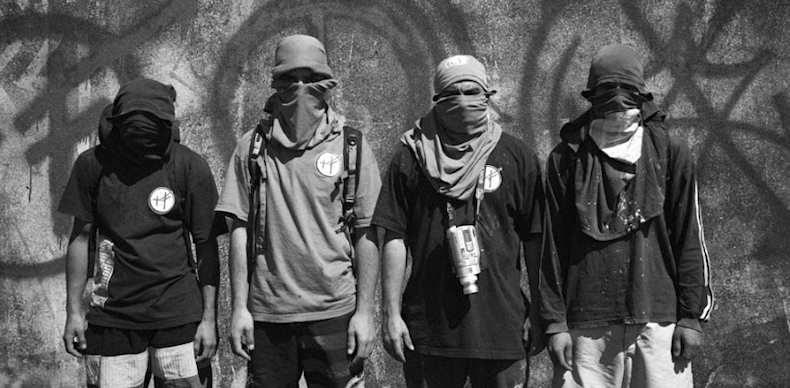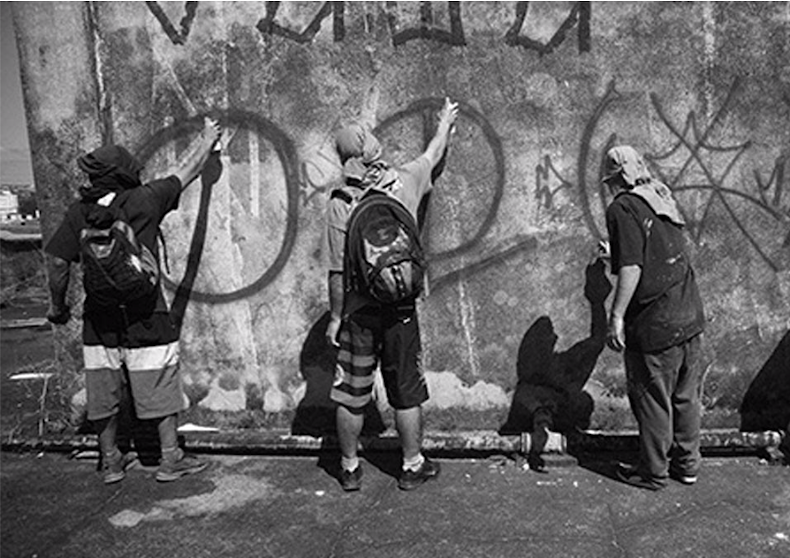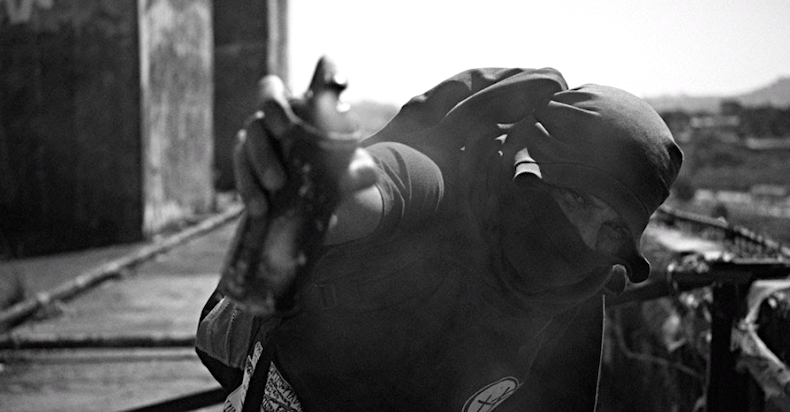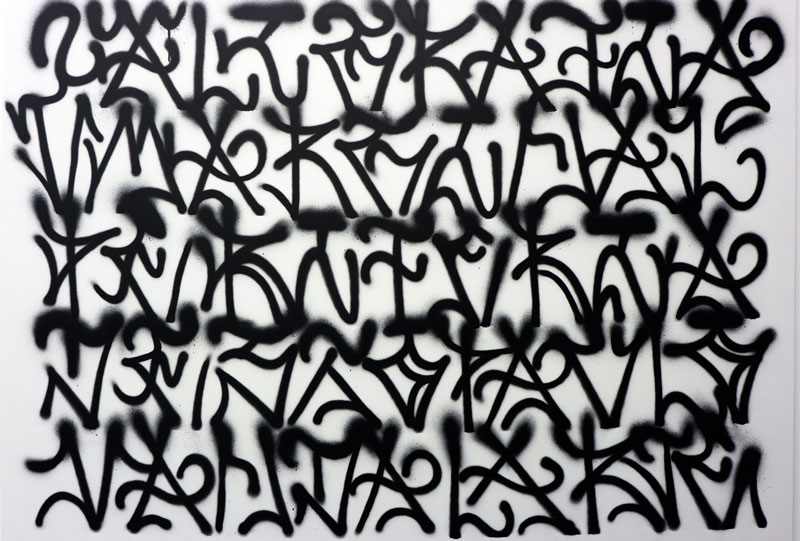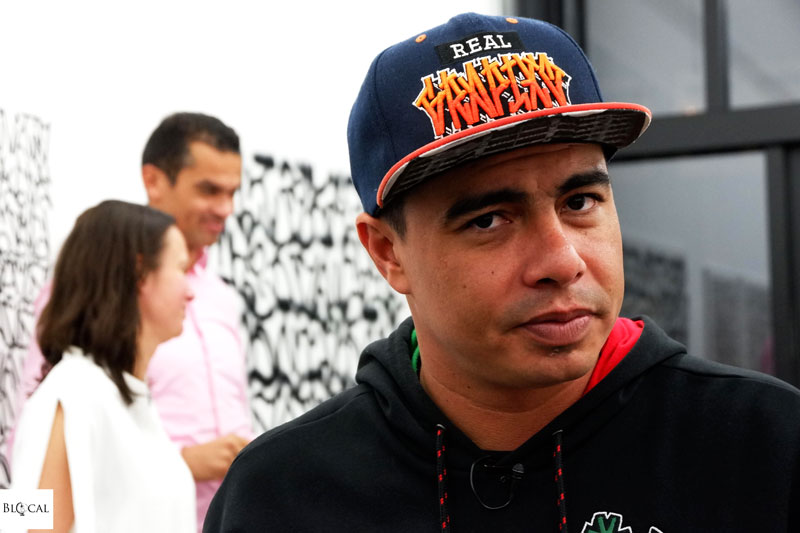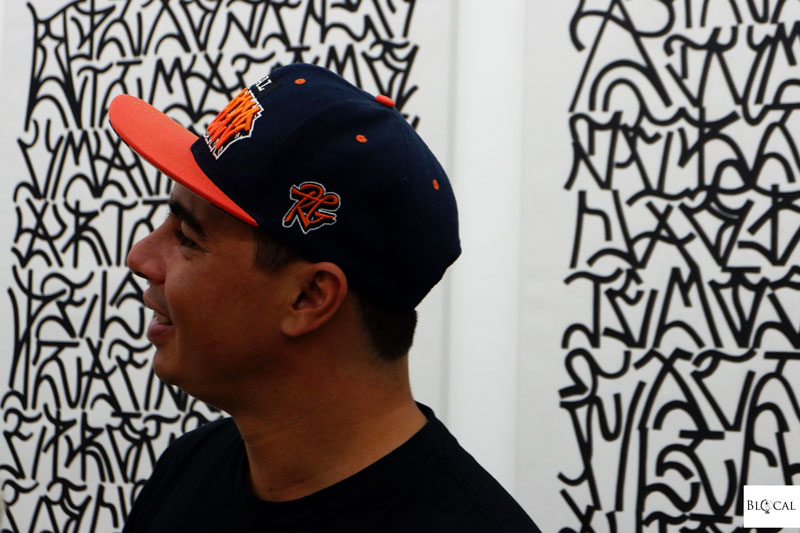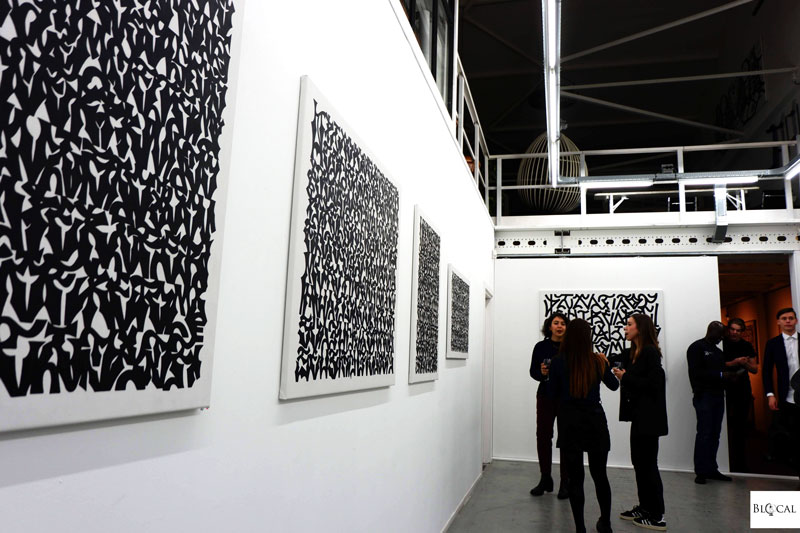After less than one month into my new life in Amsterdam, I’ve already had the chance to interview a very unconventional artist: Cripta Djan. We met at the opening of his solo show at Kallenbach Gallery in Amsterdam Niew West and talked about pixação and Djan’s road to contemporary art…
Pixação is a Brazilian political and artistic movement that serves as the voice of the voiceless. By painting black, stylized words on the most inaccessible spots in the city, pixadores risk their own life to represent the unseen and to persevere in the (re)appropriation of the city on behalf of the marginalized.
Pixação, a practice of freedom of expression
The Pixo movement is born in the 1980s from Brazil’s popular culture of typography. It inherits its aesthetic from hard-core, punk-rock album covers and brings those unpolished, cryptic signs onto the walls to promote individuality. By painting their names and the name of their group in public spaces, pixadores take back the city that was denied to them.
Pixo constitutes the visual representation of freedom of expression in public spaces. These spaces aren’t democratic, but are designed and built to serve private interests. Where the public use of the public space is denied, pixadores fight for a city meant for all its inhabitants –not only the richest ones.
Pixação is therefore activism, a form of political art whose message is implicit in the act of pixar itself: it’s a revolt against a society where there is no place for the poor.
Pixadores risk their own life by writing in the most dangerous spots. There is a genuine, innate competition in the movement, a competition based on creativity, on quantity and on radicalism. Not only painting the largest amount of pixos, but also the complexity of the execution and the riskiness of the action will help the pixador escape from social invisibility.
Pixação, a story of brotherhood
Already in the 1990s this underground movement that was born spontaneously in the favelas got a structure. Confraternities were born, composed by several smaller groups. They were groups of friends, kids who grew up together in the most disadvantaged areas in the Brazilian metropolis, peers who gathered to have parties, walk around the city and socialize, although society called them ‘gangs’ and ‘vandals’.
Going out at night, they did write their name on walls, although even more important than the individual’s name is writing the name of the group. The spirit of brotherhood comes before the individual by a code of honour but also –literally- on walls.
From top to bottom, pixadores first write the symbol of the brotherhood, then the name of the group and lastly their own name. This sense of belonging is so strong that even for his career as a visual artist Djan chose to keep ‘Cripta’ (the name of the group he belongs to) before his real name.
Djan joined his group Cripta in 1996, at the age of 12. The dedication required by Pixação completely transformed his life and his perception of urban space. He developed a different feeling of the city, which now represents a stage for pixadores, or better: for their competition.
The Cripta group began gaining recognition between 1999 and 2000 by pioneering one of the riskiest techniques of Pixação: escalada. Escalada consists in climbing high buildings without safety equipment. Before Djan and his friends, pixadores wouldn’t climb a building, but invading it from inside to paint the top.
Climbing to the top of buildings as high as 20 storey became Cripta’s specialty, their characteristic way of fighting this class war with black spray-cans and anger. It became their own, somehow intimate, way of celebrating life by living each day as if it was their last. And by enjoying the sense of freedom and belonging while sitting at the top of São Paulo’s highest buildings overlooking the marks they had left in the cityscape.
Cripta Djan, expanding outside the Favela
In a world more and more consecrated to business and private interests, the Pixo movement has spread outside Brazil as well. Even Europe has got its own version of Pixação, which is carried on by the Berlin Kidz.
In 2012 Cripta Djan had the opportunity of pixar together with the Berlin Kidz, both in Berlin and in São Paulo. Rather than seeing it as a copy of an aesthetic undoubtedly intertwined with Brazil’s socio-economic issues, Djan is glad that the tradition of Pixo has expanded outside Brazil. He hopes that not only Pixo proliferates abroad, but also that it would ‘infect’ other arts.
On these premises, the Cripta group took part in several institutional events, such as the Berlin Biennale in 2012. There, they shocked all the visitors with an authentic demonstration of Pixação: spontaneously painting on the old bricks of a church rather than on the wooden panels that the curator of the Biennale had carefully placed for them.
Still in the established art world, Cripta Djan has begun his own artistic path consisting in the symbolic representation of Pixo away from the street. It’s a different way of expressing himself, which borrows from the Pixação tradition the typical aesthetic of repeating motifs, but switch the physical, adrenaline-fuelled challenge of painting in the streets with the artistic and conceptual challenge of showing to the world the potential aesthetic of Pixo and that a pixador can be in an art gallery as a relevant voice in the contemporary art scene.
Unlike in the streets, Cripta Djan’s artworks are clean. Sharp, geometric lines shape neat characters, which remind of Pixo, used to transcribe Djan’s texts about life in the outskirts. By telling the stories of the marginalized to yet another public, his canvases legitimate Pixação in the Arts bringing the discussion to the members of the public more used to the ‘whitecube’ environment.
Cripta Djan’s solo show at Amsterdam’s Kallenbach Gallery
Amsterdam’s Kallenbach Gallery presents “Caligrafia Marginal”, Cripta Djan’s debut solo exhibition in the Netherlands. This exhibition shows how tradition of Pixação calligraphy has unlimited aesthetic potential in the gallery environment as much as it does in the streets. It presents on canvas the power of the visual aesthetic of Pixação developed over several decades of underground research and experience, through the hands of one of the legends of Brazil’s Pixo culture.
